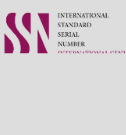Addressing and Battling the Rising Threat of Antimicrobial Resistance
Keywords:
Antimicrobial Resistance, Drug Resistance, Infectious, Microbial, Public HealthAbstract
Antimicrobial resistance (AMR) has become one of the biggest concerns to world health in recent decades. AMR, a phenomenon where bacteria, fungi, and other microbes adapt to survive the medications that originally killed them, has long been a source of concern for the World Health Organization (WHO). The capacity to cure infections with antibiotics and antifungals, which was once a major medical breakthrough, is now in danger of going extinct [1].
The Rise of AMR: A Global Crisis
AMR affects individuals of all ages worldwide and transcends national boundaries. Once-treatable infections become once again life-threatening as bacteria develop resistance to therapy. Deadly infections could result from even modest surgery, cancer treatments, or organ transplants. Millions of lives are already at risk each year due to the advent of resistant strains of illnesses, including pneumonia, urinary tract infections, and tuberculosis, and the problem is only getting worse [2]. The CDC estimates that every year, around 3 million people in the US alone become infected with drug-resistant germs, which results in over 35,000 fatalities [3]. The situation is significantly worse in low- and middle-income nations, where access to healthcare, especially necessary antibiotics, is more restricted. Misuse of antibiotics, poor diagnostics, and subpar or fake drugs all contribute to the spread of resistant microbes. However, the overuse and abuse of antibiotics in agriculture and human health contribute significantly to the issue, especially in high-income nations. Antibiotic-resistant bacteria have flourished due to the overprescription of antibiotics for viral diseases that they cannot cure and the use of antibiotics in animals to stimulate growth rather than only treat disease [4].
The Silent, Yet Destructive, Consequence of Overuse
The overuse and abuse of antibiotics are the main causes of AMR. Antibiotics are frequently prescribed without question for viral illnesses such as the flu or the common cold. Antibiotics, which fight bacteria, don't work against viruses, yet patients still ask for them, and doctors often give in. This leads to a vicious cycle in which new infections grow more difficult to cure and drugs lose their effectiveness [5]. Another important factor in the spread of AMR is agriculture. In livestock husbandry, antibiotics are commonly used to treat disease, prevent disease, and encourage growth in otherwise healthy animals. Animals that get excessive doses of these medications may develop resistant germs, which humans may contract by eating meat, coming into contact with animals, or environmental pollution.
The Financial and Humanitarian Expenses
There is no way to overestimate the economic impact of AMR. AMR currently has a huge global impact; if current trends continue, projections indicate that it could cause 10 million deaths yearly by 2050. This would be more than the number of cancer-related deaths. Furthermore, the loss of efficient antibiotics could jeopardize necessary procedures, lengthen hospital stays, increase the expense of treatments, and hinder rehabilitation, thus undermining the advancements made in contemporary medicine. The influence on society is equally astounding. AMR disproportionately impacts the most vulnerable, including children, the elderly, those in poverty, and those who already have other health concerns. Access to even the most basic healthcare is still difficult to come by in many regions of the world. Those who are most vulnerable may encounter even more obstacles to treatment and rehabilitation as antibiotics lose their effectiveness, exacerbating health inequities [6].
A Worldwide Appeal for Action
An international, coordinated effort is needed to combat AMR. The public, governments, medical professionals, researchers, and the agriculture industry must all contribute. To track and manage the development of resistant illnesses, national health agencies and international organizations like the WHO need to make greater investments in surveillance systems. At the same time, more attention must be paid to teaching the public and medical professionals about the risks of antibiotic abuse and the significance of only using antibiotics and when necessary. Programs like antimicrobial stewardship are crucial in the healthcare industry. These initiatives guarantee that the appropriate medication, dosage, and length of time are used and that antibiotics are only provided when necessary. Stronger laws are also required to limit the use of antibiotics in agriculture, make sure that any usage is carried out under appropriate supervision, and concentrate on reducing resistance.
Priority must be given to funding the creation of novel antibiotics and complementary therapies. Innovation in this field has not kept up with the increasing tide of antibiotic resistance, and the pipeline for novel antibiotics has slowed considerably. To encourage the study and development of new antimicrobial drugs and treatments, as well as substitutes like vaccinations and phage therapy, governments and the commercial sector must work together more successfully [7]. Hand sanitizers play a vital preventive role. The study "In Vitro Evaluation of the Antimicrobial Properties of Various Hand Sanitizers" found that imported hand sanitizers were the most effective in maintaining hand hygiene, followed by local chemical, multinational, and local herbal products. These findings highlight the critical need for regulatory oversight to ensure product claims align with verified antimicrobial performance [8].
To combat AMR, significant investments in global health infrastructure will be necessary, particularly in low- and middle-income nations, to provide access to high-quality antibiotics, diagnostics, and infection control techniques. This will lessen the spread of resistant strains and the overuse of antibiotics.
Conclusions
AMR is not a far-off concern; rather, it is a crisis that is already developing and has serious ramifications for the economy, public health, and the welfare of future generations. Now is the moment to take action. We can only expect to stop the spread of AMR and maintain the efficacy of these life-saving medications by coordinating international efforts, committing to the appropriate use of antibiotics, and investing in research and healthcare infrastructure. All of us—healthcare providers, legislators, academics, and citizens—must take swift, decisive action in the fight against AMR. Never before have the stakes been so high.
Downloads
References
. Papp-Wallace KM, Endimiani A, Taracila MA, Bono-mo RA. Carbapenems: past, present, and future. Anti-microb Agents Chemother. 2011;55(11):4943-60.
. Cassini A, Högberg LD, Plachouras D, Quattrocchi A, Hoxha A, Simonsen GS, et al. Attributable deaths and disability-adjusted life-years caused by infections with antibiotic-resistant bacteria in the EU and the European Economic Area in 2015: a population-level modelling analysis. Lancet Infect Dis. 2019;19(1):56-66.
. Murray CJ, Ikuta KS, Sharara F, Swetschinski L, Aguilar GR, Gray A, Han C, Bisignano C, Rao P, Wool E, Johnson SC. Global burden of bacterial antimicrobial resistance in 2019: a systematic analysis. The Lancet. 2022;399(10325):629-55.
. Naghavi M, Vollset SE, Ikuta KS, Swetschinski LR, Gray AP, Wool EE, et al. Global burden of bacterial antimicrobial resistance 1990–2021: a systematic anal-ysis with forecasts to 2050. The Lancet. 2024;404(10459):1199-226.
. Blair JM, Webber MA, Baylay AJ, Ogbolu DO, Pid-dock LJ. Molecular mechanisms of antibiotic re-sistance. Nat Rev Microbiol. 2015;13(1):42-51.
. Liu Y, Yang K, Zhang H, Jia Y, Wang Z. Combating antibiotic tolerance through activating bacterial metab-olism. Front Microbiol. 2020;11:577564.
. Kitzenberg DA, Lee JS, Mills KB, Kim JS, Liu L, Vázquez-Torres A, et al. Adenosine awakens metabo-lism to enhance growth-independent killing of tolerant and persister bacteria across multiple classes of antibi-otics. MBio. 2022;13(3):e00480-22.
. Munir R, Farooq A, Salar MZ. In vitro evaluation of the antimicrobial properties of various hand sanitizers. Chron Biomed Sci. 2024;1(4):PID31.
Downloads
Published
Issue
Section
Categories
License
Copyright (c) 2025 Open Access Journal

This work is licensed under a Creative Commons Attribution-NonCommercial 4.0 International License.



